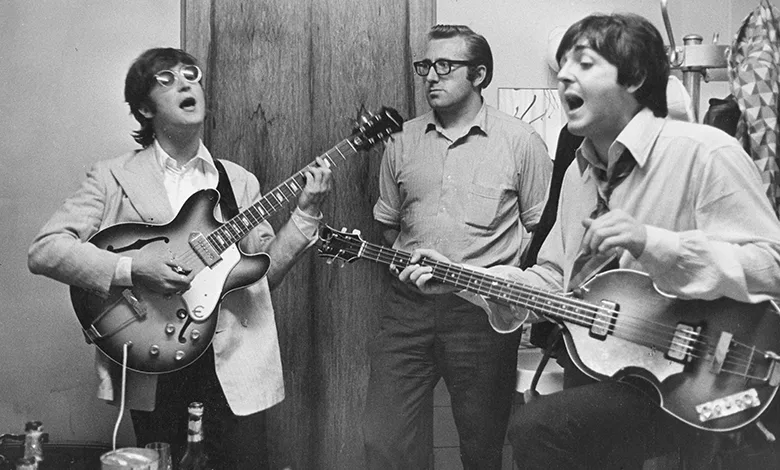
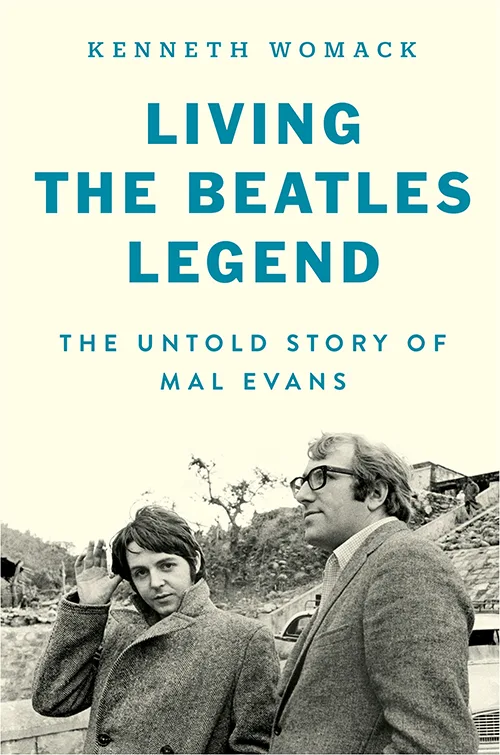
Now, Beatles historian Kenneth Womack brings Mal’s remarkable story to light in Living the Beatles Legend, a biography drawn from Evans’ diaries, letters, manuscripts, and memorabilia. The book captures the chaos, creativity, and closeness behind the scenes of Beatlemania—and reveals just how essential Mal was to the Beatles’ world.
Who was Mal Evans?
Mal Evans is a name that might not ring a bell for some Beatles fans. But the so-called gentle giant was a fan long before anyone else had heard of them—back when they played the Cavern Club in Liverpool.
As the Fab Four launched to superstardom, “Big Mal” was along for the ride. He became a fixture in the lives of John Lennon, Paul McCartney, George Harrison, and Ringo Starr—even after the group’s breakup in 1970.
From postman to roadie
Evans had a stable job working for the British Post Office when he became a regular at the Cavern Club in the early 1960s. He quickly fell in love with the group’s raw sound and energy.
“George Harrison told him, ‘You’re a big guy, and you like being around rock bands, why don’t you get a job as a bouncer? And then you can do this whenever you want,'” explains Beatles historian Kenneth Womack.
That one comment set Mal on a life-altering path. He became the Beatles’ roadie, bodyguard, and all-around fixer, working alongside personal assistant Neil Aspinall to help the band navigate the chaos of Beatlemania.
Keeping the Beatles safe and sane
Crowds of screaming teenagers descended on the group, and security was often laughably insufficient. “Mal would say, ‘You need to send a lot of guys,’ and they would send two sheriffs or something like that,” Womack recalls. “And he’d say, ‘That is not enough.’ It’s a wonder that in those early years, nobody was killed.”
Evans’ tasks varied wildly—from fending off fans to running out for guitar strings in the middle of the night. He was a constant presence, always doing whatever it took to keep things running smoothly.
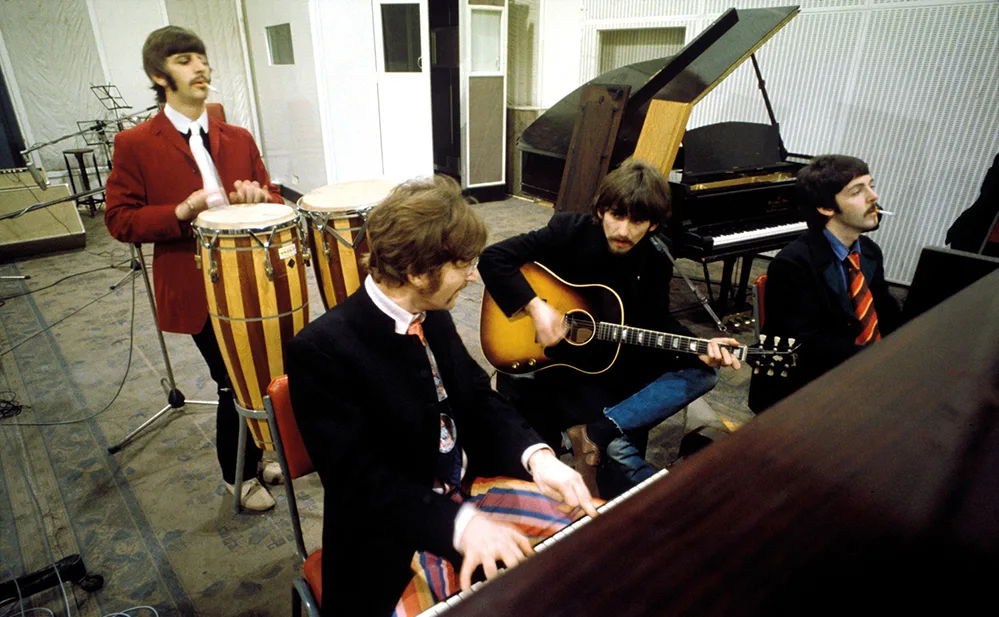
Studio support and surprising contributions
“The Beatles would spend 700 hours making ‘Sgt. Pepper,’ more than 1,000 hours on the ‘White Album,'” Womack explains. “And guys like Mal were essential to keeping that operation going into the wee hours.”
One example: when the band needed a hammer and an anvil for “Maxwell’s Silver Hammer,” Evans knew where to get one. He even played the anvil in an early version of the song (though not the one that made it onto Abbey Road).

Friend, fixer, and emotional anchor
Mal’s relationship with the Beatles deepened over time, and while he was their friend, he was also their employee. This dynamic often blurred the lines between personal and professional boundaries.
“The Beatles would sometimes get upset about who had Mal: ‘Who’s now gonna help this weekend? I thought this was my weekend with Mal,'” Womack says. “After they stopped touring, they were all in London full-time, and Mal became even more essential.”
At 6-foot-3, Evans provided both muscle and comfort. He became family.
A sudden end and lost legacy
Evans later worked with the band Badfinger, which was under contract with the Beatles’ Apple label. A dispute with Apple executive Allen Klein led to his firing. “And it just destroys Mal,” says Womack.
By the early ’70s, he had moved to Los Angeles and separated from his wife, Lily. In January 1976, Evans was killed by police during an armed standoff inside his home. He was only 40 years old.
Womack believes Evans was spiraling. “I do think it was a kind of long-running suicide,” he says. “He did not plan for his wife and family to know that he was shacking up with another woman.”
Boxes in a basement: A Beatles treasure nearly lost
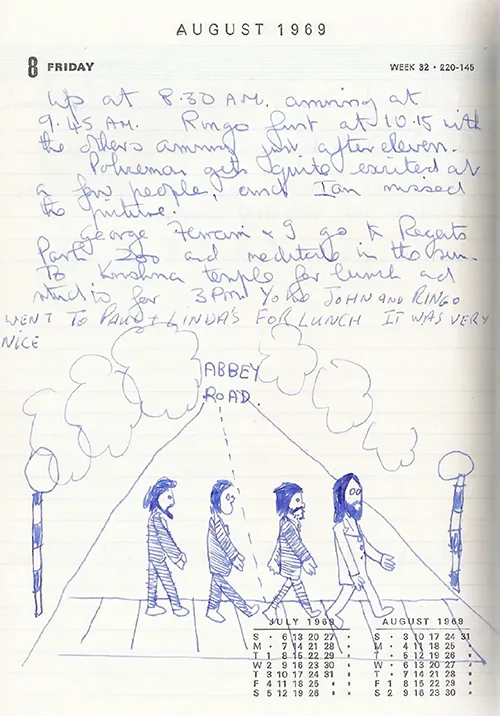
Evans had been working on a memoir, but after his death, the manuscript remained unpublished.
Lily, his ex-wife, refused to grant permission, and “six huge boxes of material” sat in the basement of the New York Life building for years.
A Beatles-loving intern at the publishing house was tasked with clearing out the basement in the late ’80s.
She discovered vintage Beatles photos and Evans’ manuscript and alerted management.
Unsatisfied with the response, she wrote a note to Yoko Ono and left it with her doorman.
Apple’s lawyers quickly recovered the materials and returned them to the family.
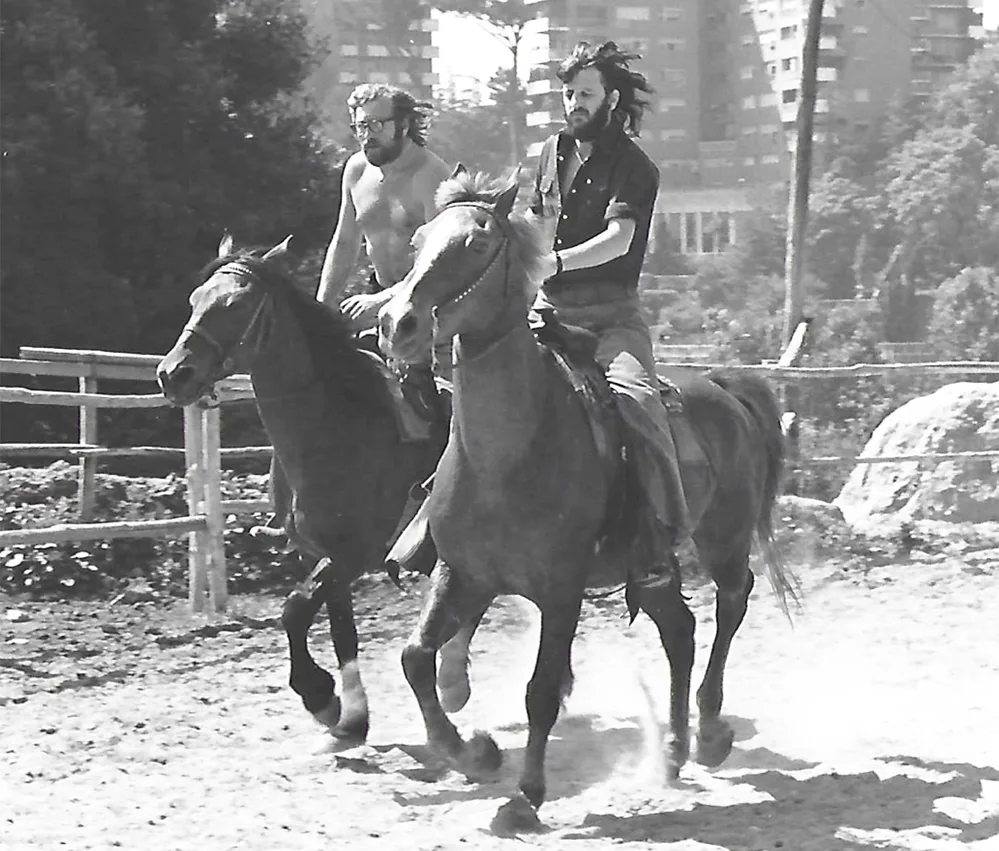
Honoring Mal’s legacy
For Womack, the photos from Evans’ archive are among the most moving—including one of Mal and Ringo on the set of the 1971 spaghetti western Blindman.
“They’re learning how to ride horses, and you have Mal and Ringo astride these horses,” he says. “Mal is shirtless, and it’s such a fish-out-of-water picture.”
“Mal was the most intimately embedded fan of all time,” Womack adds. “What’s the dark side of that? Well, it’s a considerable dark side. Because you subsume your identity.”
But Evans’ archive—and Womack’s biography—also chronicle the Fab Four’s dizzying rise to superstardom. They tell the story of a man who gave up an ordinary life for an extraordinary one, and how he made that rocket ride just a little less bumpy for four young men who changed the world.
Mal Evans didn’t write the songs or take the stage—but without him, the Beatles’ rise may have looked very different. Now, decades later, his story finally takes its rightful place in the Beatles’ legend—reminding us that behind every cultural revolution are the people who quietly help make it possible.
Kenneth Womack, a professor at Monmouth University, hosts a free monthly session analyzing various musical works, called the Tuesday Night Record Club. Watch online here
Most photos courtesy of the Malcolm Frederick Evans Archive.
Read more in-depth interviews and features by Jack Pointer. Browse his articles here.






